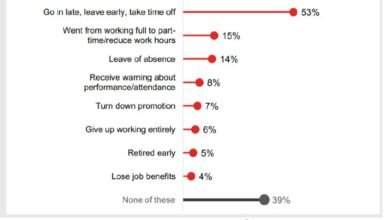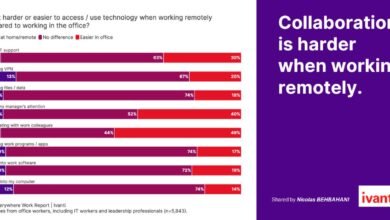
By | Editor
The Evolution from Work-Life Balance to Integration
In the wake of COVID-19, the long-standing debate over work-life balance has intensified. Historically, employees have spent a significant portion of their lives—about 75% of their productive years (ages 25 to 60)—at work, typically within the traditional 9-to-6 schedule. This routine often left little room for personal life, leading to a widespread feeling of being consumed by work responsibilities. The advent of remote work has further blurred the lines between professional and personal spheres, prompting a critical reevaluation of how we integrate work into our lives.
Understanding Work as a Means, Not an End
The fundamental premise of this shift is recognizing that work is a means to an end, not the end itself. Life encompasses a much larger canvas, filled with dreams, passions, and personal goals. If one’s professional life obstructs the enjoyment and fulfillment of these broader life aspects, it results in a wasted opportunity during one’s lifetime.
Bringing Life to Work
Bringing life to work is a transformative concept that reflects a significant shift in how we approach our professional lives. It’s about creating a work environment that’s not just about tasks and targets, but also about personal growth, fulfillment, and happiness. This concept recognizes that employees are not just workers but whole individuals with diverse interests, passions, and life outside of work.
In practice, bringing life to work means integrating personal values, interests, and well-being into the workplace. This could manifest in various ways, such as flexible working arrangements, opportunities for personal development, or activities that encourage creativity and relaxation within the work setting.
The idea is to create a more harmonious balance between professional responsibilities and personal life, leading to increased job satisfaction, creativity, and productivity. It’s about recognizing that when employees feel valued and supported in all aspects of their lives, they are more engaged, motivated, and loyal to their organization.
The Concept of Work-Life Integration
Unlike the traditional concept of work-life balance, which implies a strict segregation between work and personal life, work-life integration advocates for a more harmonious blending of the two. Progressive thinkers and organizations are now focusing on creating work cultures that support this integration.
Role of Organizations and HR in Fostering Integration
Organizations, led by their HR departments, are pivotal in crafting environments that support employees’ life goals and passions. This approach involves:
- Encouraging Personal Pursuits at Work: Organizations can foster environments where employees’ talents and hobbies are recognized and nurtured. For instance, an employee with a flair for singing might participate in corporate talent shows, while sports enthusiasts might receive support to pursue their sport alongside their work responsibilities.
- Facilitating Dual Careers: Employees could be encouraged to explore multiple facets of their identity. A business unit head might engage in acting or participate in drama, while another employee might pursue stand-up comedy. These opportunities reflect an organization’s commitment to recognizing and valuing its employees beyond their professional roles.
- Nurturing and Developing Talent: Employers should focus on identifying and nurturing the hidden talents of their employees. This approach not only benefits the individual but also contributes to a richer, more diverse workplace culture.
The Benefits of Integration
Work-life integration offers numerous benefits, both for employees and organizations. For individuals, it provides a sense of fulfillment, reduces burnout, and promotes a healthier work-life synergy. For organizations, fostering this integration can be a key differentiator, making them more attractive to prospective employees and enhancing their reputation as great places to work.
Incorporating work-life integration into corporate culture is becoming increasingly important for organizations aiming to improve employee satisfaction and productivity. Several innovative companies have successfully implemented various initiatives to promote this balance, demonstrating that work-life integration is both feasible and beneficial.
Examples of Corporate Work-Life Integration Initiatives
- Travel Stipends by Moz and Evernote: Both companies offer travel budgets to employees, with Evernote providing $1,000 and unlimited paid time off (PTO), and Moz offering a $3,000 reimbursable travel budget along with paid vacation and holidays. This not only improves loyalty but also supports employees in living a fulfilling life outside of work.
- IBM’s Volunteering Program: IBM encourages employees to volunteer at various organizations, improving engagement at work and offering personal fulfillment. Over 89,000 employees have registered for this program, with a recorded 860,000 hours of volunteer work in 2021.
- Dream11: This Mumbai-based company has introduced a unique policy to ensure employees can fully disconnect while on holiday. Colleagues who contact employees on leave face a significant fine, emphasizing the importance of uninterrupted time off. This initiative allows employees to relax and recharge, coming back to work ready to give their best.
- Godrej Consumer Products: This FMCG giant offers open and flexible working practices, encouraging employees to take on challenges in a supportive environment. The company emphasizes career development and has initiatives like LOUD (Live Out Ur Dream) at the Godrej Campus to recognize creative and passionate individuals.
- Google India: At Google India, there are no fixed work hours. Employees are encouraged to work according to their schedule and convenience, with the provision of work-from-home facilities in emergencies. The company offers a range of amenities like massage chairs, a gym, and team outings, further supporting a healthy work-life balance.
- Schneider Electric has implemented a noteworthy policy that encapsulates its commitment to honoring its employees’ personal time. Included in their email signature is the tagline, “No reply expected outside your working hours.” This concise yet powerful statement underscores the company’s respect for the boundary between work and personal lifeThis approach reflects Schneider Electric’s understanding of the importance of work-life balance and its dedication to fostering a respectful and supportive work environment.
- Help Scout’s Sabbatical Policy: Employees receive a month-long paid time off after four years with the company, along with a $2,500 bonus to enjoy their sabbatical.
- Microsoft’s Work Life Choice Challenge: A 4-day work week experiment led to a 40% increase in productivity, demonstrating the effectiveness of shorter work weeks in boosting employee output.
- Hootsuite’s Wellness Week Initiative and Owly Quality Time: Hootsuite offers a company-wide wellness week off and half-day Fridays in summer, contributing to employee rejuvenation and work-life balance.
Additional Work-Life Integration Measures
- Telecommuting: Offers employees more freedom and flexibility with their work, improving work-life harmony and potentially increasing productivity.
- Job Sharing: Allows employees to share their workload, enhancing creativity and reducing the risk of burnout.
- Sabbaticals: Offers extended periods away from work for personal growth, skill acquisition, or simply a break from routine, benefiting both the employee and the organization.
- Wellness Programs: Activities like yoga or meditation can improve mental health and work performance. Studies show that for every dollar spent on wellness programs, there’s a significant decrease in medical and absenteeism costs.
- Employee Assistance Programs (EAPs): Provide counseling and support for personal challenges, thereby enhancing overall well-being and productivity in the workplace.
- Flexible Vacations: Giving employees control over their vacation time can reduce unscheduled absences and increase productivity, also attracting top talent.
- Financial Education and Support: Offering financial assistance and education, such as 401(k) matching plans, can reduce stress levels and increase job satisfaction.
- Using Technology: Employing technology to facilitate remote work and asynchronous communication helps in maintaining a balance between professional and personal commitments.
These examples demonstrate the varied and innovative ways companies are successfully integrating work and life for their employees. From flexible work arrangements and travel stipends to wellness programs and sabbaticals, these initiatives not only enhance employee satisfaction and retention but also contribute to increased productivity and a more positive workplace environment. As more organizations recognize the importance of work-life integration, such measures are likely to become a standard in corporate culture, reshaping the way we think about work and life balance.
Bringing life to work is about fostering a culture where the line between work and personal life isn’t rigid but fluid and supportive, enabling employees to thrive both professionally and personally.
The shift towards work-life integration reflects a growing understanding that work is a part of life, not separate from it. Companies that embrace this philosophy are not only enhancing their employees’ quality of life but also reaping benefits in terms of productivity, creativity, and overall workplace satisfaction. As we continue to navigate the changing landscape of work, work-life integration stands out as a key component in building a more humane and effective workplace culture.
Work-life integration represents a paradigm shift in how we perceive the intersection of our professional and personal lives. By embracing this concept, organizations can create more fulfilling, productive, and harmonious workplaces, where employees feel valued not just for their professional contributions but also for their personal passions and talents. As we move forward, this integration is likely to become a significant competitive advantage and a hallmark of progressive, employee-centric organizations.






